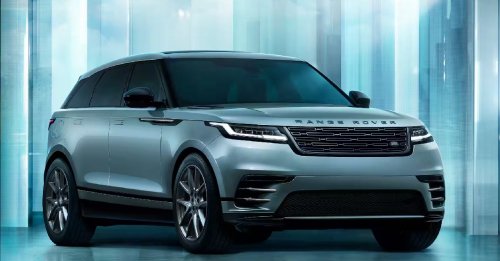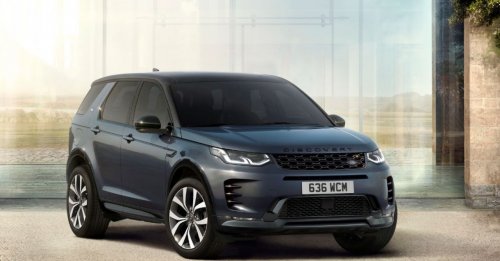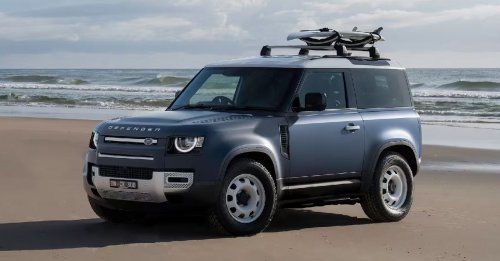The next Freelander will be rechristened the ‘Discovery Sport,’ as it heralds a new family of Land Rover vehicles with this iconic name.
It could be the inherent awesomeness of the name ‘Discovery,’ or the fact that this was the name of the third Nasa Space Shuttle – or simply that this is the spirit embodied by the shuttle, now retired, and the Virgin Galactic Spaceship soon to be headed to the next frontier. Nevertheless, the Virgin Galactic Spaceship was on hand to unveil the new off-road family under this familiar name. This family will have such a far-reaching impact, in fact, that even the third generation Freelander will – almost certainly – be labelled the ‘Discovery Sport.’
Naturally, there will be some grief – since there are those who are passionate about the Freelander. After two generations, and nearly a million units, a name enters into the story of a brand. It forces its way into your head, and, in some cases, your heart. But sometimes sacrifices must be made, and so the Freelander (the name, not the machine) has prematurely been initiated into retirement. All this to comply with the on-going policy that calls for a consolation of models (with resulting economies of scale) – and this means assimilating the small-to-medium Land Rover SUV’s into the Discovery line. A line that will consist of, at least, three models – with the Discovery at the top of the range, the Discovery Sport (i.e. the new Freelander) in the middle, and a compact model (although they refuse to speak of this yet at Solihull) at the bottom of the range. The stylistic identity of this new family was previewed with the Discovery Vision Concept at the New York Motor Show. The picturesque deck of the USS Intrepid aircraft carrier (no longer in service of course), docked on the Hudson River and turned into a museum, served as the backdrop to communicate the news of a partnership with Virgin Galactic. From now on, Land Rover will be the official car of the airline’s first team. The aim of the airline, of course, is to provide ‘transportation’ for private (read: very wealthy) customers into space. These future ‘astronauts’ will use the British 4x4 during their training in New Mexico, and to make their way from the terminal to the Virgin Galactic SpaceShuttle Two. “It would have been difficult to think of another brand that could adequately express the concepts of adventure and exploration,” said Virgin boss, Richard Branson.
Back with our feet placed firmly on the ground, the heir of the Freelander (of which you can see our renderings on these pages) will be the first to be launched. We’ll see it in its final version at the Paris Motor Show – its actual launch is expected in the first half of next year.
Waiting for the Baby Disco
For the Discovery, however, we’ll have to wait until the end of 2015 – or maybe the beginning of 2016. For the smallest version (that the press has already nicknamed as the Baby Disco), the time horizon for the launch is 2017. After having revamped the image of the Range Rover line, starting from the Evoque, today the ambition at Solihull is to redefine the concept of a leisure vehicle. Practical, yet comfortable, but also elegant and sophisticated – yet with the ability to face long adventures, and with unchanged off-road capabilities. As well as the style, more straightforward and streamlined, with full and solid lines, this renewal comes through the electronics – which will play an increasingly active role not only in the sphere of entertainment, and the management of on-board functions, but also in what the collective imagination keeps envisioning (in too romantic a way) as a ‘mechanical’ act: that of driving off-road. Today, the off-road capability of these vehicles already benefits from systems such as the All-Terrain response – so we’re pretty sure that, in the future, this will increasingly depend on microchips instead of on the strength of the drivers’ arms. The Discovery Vision Concept showcased in New York has been the godfather of innovative driver assistance systems for off-roading – like the laser used as a sounder to overcome fjords, to the projection of an image of the ground on the windshield (recorded by cameras positioned on the underbody). Soon we’ll see it on the list of options for the Land Rover range. Don’t forget that in 2016, the most iconic Land Rover will be renewed – the Defender, which has so far resisted all fashion and trends. For a small market of purists, it remains one of the few true and straight 4x4’s. A big question mark remains on how they’ll introduce this ‘dinosaur’ into a hi-tech world. However, the specialization of the Defender (which, by the way, will also spawn an entire family) will have to rely on lasers, cameras, and virtual reality.
The New York Concept - The future in here
The Discovery Vision Concept, which debuted at the New York Motor Show, showcased some fascinating technologies – which will be available soon...
It’s been a long time since, in 1948, the first Land Rover ‘climbed’ the hills of Wales to ensure that the transmission and differential worked to perfection. Today, the engineers of this iconic off-road brand must handle a much more complex scenario – made up of sensors, lasers, and interactive displays. On the Discovery Vision concept, the newest laboratory, one can control the mapping of the ground on a high-definition screen created by a system called Terrain Laser scanner, which uses an infrared laser emitted from the fog lights to continuously scan the ground. The map is then used by the All-Terrain coach to chart a course, and assist the driver to follow it. And then there is the laser that can intervene in front of a creek, to help the driver cross obstacles like streams. Before the wheels touch the water, the beam emitted by the vehicle is able to measure the depth of the water – indicating to the driver if the crossing is possible. Moreover, if you get weary of being at the controls, just engage All-Terrain Progress Control, which allows semi-autonomous off-road driving at slow speeds. Furthermore, Remote Control drive even allows you to drive the vehicle at low speed without being on board. A useful function, says the company, when attaching a trailer for example, or even when doing extreme off-roading – allowing the driver to be his own spotter. We’ve talked about the ‘transparent bonnet’ separately, but suffice to say that it uses ‘smart glass’ allied to the head-up display. Plus, closing of doors, turning off lights, and other on-board functions, are managed with gesture controls.
Family Ties
The Discovery Vision Concept demonstrates styling that will shape this family of vehicles
Close to Production
The interior of the Discovery Vision Concept, with seven-seats, is highly adaptable. While the bucket seats are straight out of a show car, the dashboard appears quite close to that of a production car
What a great invention The transparent bonnet
Throw Harry Potter’s cloak of invisibility on the Discovery Vision’s hood, and you see what Solihull calls ‘transparent bonnet.’ It looks magical, allowing you to look through the car’s body to see exactly where the front wheels are positioned. It’s actually a relatively simple technology, which uses cameras placed under the front grill allied to the head-up display in the windshield. In the images below, shared by Land Rover, you’ll notice the difference in the field of view offered by the system when the cameras are in operation. With sophisticated techniques of mapping the land beneath, the ‘transparent bonnet’ makes off-roading safer than ever before.
One Name Three Variations
DISCOVERY - This ‘original’ will retain, unchanged, some of the iconic elements of the current Discovery – like the step in the roof, and enough space for seven
DISCOVERY SPORT - This is the new name for the Freelander, which will be a little bit bigger than the current model. There’s enough space for 5 people (but it could be a 5+2 as well)

Genealogy Two Dynasties
The Discovery was born in 1989, as the third model of the brand – which was, until then, focused on the Defender (which will still be named the 90 and 110, in the second step of the company’s plan) and the Range Rover. The current model has been with us since 2004, but underwent a massive makeover in 2009. The younger Freelander is now in its second generation.
Discovery I series 1989
Discovery IV series 2004
Freelander I series 1997
Freelander II series 2006
© Riproduzione riservata








































Write your Comment